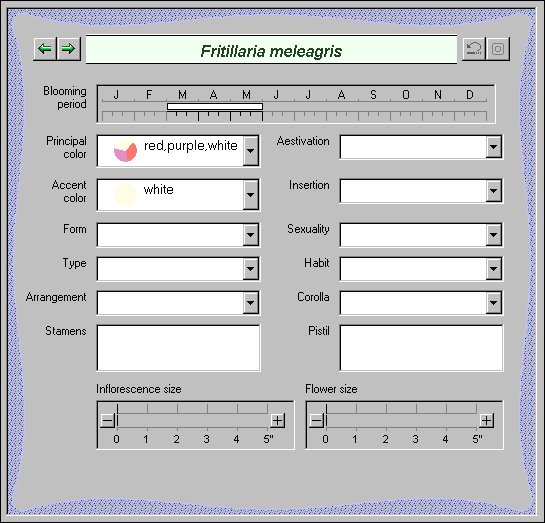
|
The Flower View is used by botanists, registration authorities, and
compilers of regional floras to precisely identify the flowers and
inflorescences. |

| Blooming period |
The normal season for flowers to be in bloom. |
| Principal color |
The most prominent colors typically seen in flowers of this species. |
| Accent color |
The notable secondary colors of the flowers. |
| Form |
The form of the inflorescence: capitate, cymose, spicate, or
umbellate to name a few. |
| Type |
The inflorescence type: catkin, head, raceme, thyrse, or umbel
for example. |
| Arrangement |
The arrangement of the individual flowers within the inflorescence.
Examples include: clustered, loose, radiant, rosaceous, spiral, and
others. |
| Stamens |
A free form description of the flower's stamens. |
| Aestivation |
The arrangement of the emerging flower parts within the unopened flower
bud. |
| Insertion |
A description of how the flower is attached to the peduncle:
adnate, embracing, sheathing, sessile, and others. |
| Sexuality |
A description of the flower's perfection: dioecious, monoecious,
polygamous, pistillate, staminate, etc. |
|
Habit |
The way in which a flower holds itself up against gravity: erect,
horizontal, nodding, or pendant. |
|
Corolla |
The form of the flower's corolla. Examples include: coroniform,
cruciform, funnelform, papilionaceous, spurred, tubular, and others. |
|
Pistil |
A free form description of the flower's pistil. |
|
Inflorescence size |
The width of an inflorescence when it is symmetrical, or the length of
an inflorescence when it is elongated. |
|
Flower size |
The length of an individual flower, not the inflorescence as a whole,
across it's widest dimension. |
|
|